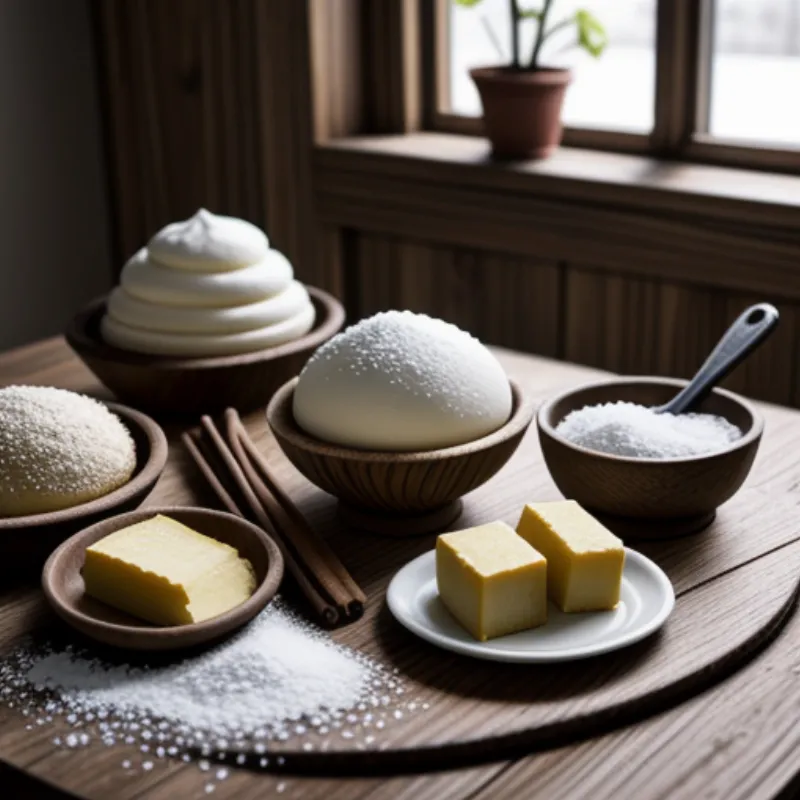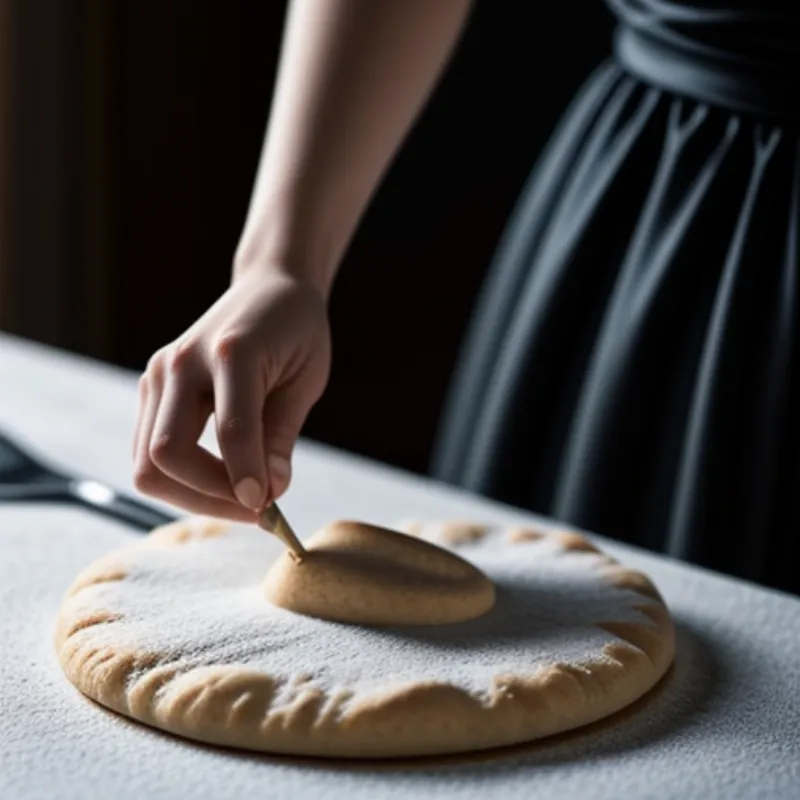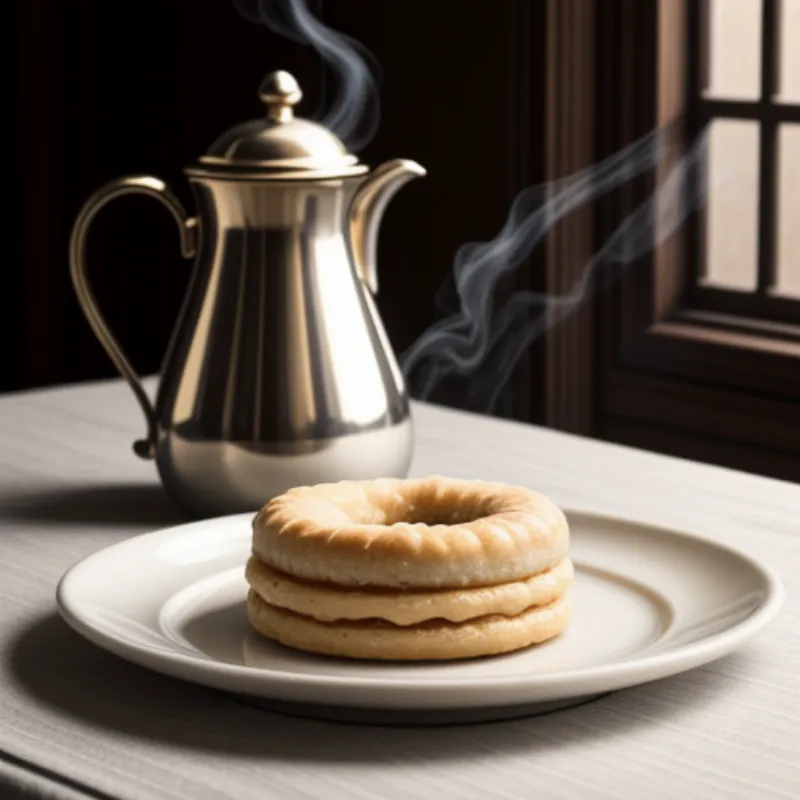Have you ever tasted a dessert so divine, so delicate, that it transports you back in time to ancient cloisters and whispered secrets? That, my friends, is the magic of repostería de conventos – the traditional Spanish convent pastries. For centuries, nuns in Spain have been crafting these heavenly treats, their recipes passed down through generations like precious heirlooms. Today, we’re going to unlock these sweet secrets and bring the enchanting flavors of Spain into your own kitchen.
This isn’t just about following a recipe; it’s about experiencing the history, the dedication, and the sheer joy of baking. So, roll up your sleeves, tie on your aprons, and let’s embark on this delectable journey together!
From Convent Kitchens to Your Home: Gathering the Ingredients
Before we begin our baking adventure, let’s gather our mystical ingredients. These are the building blocks of our culinary masterpiece, each contributing its unique charm to the final symphony of flavors.
- Flour: 2 cups (and a little extra for dusting) – the foundation of our pastries, providing structure and a comforting heartiness.
- Sugar: 1 cup – the sweetener, bringing to life the natural flavors of our ingredients and painting a smile on our faces.
- Eggs: 4 large – the binding force, holding our pastries together and adding richness and depth.
- Butter: 1 cup (softened) – the secret to melt-in-your-mouth tenderness and a golden, inviting crust.
- Milk: 1/2 cup – the gentle touch, adding moisture and creating a velvety texture.
- Honey: 1/4 cup – a whisper of Spanish sunshine, lending a touch of floral sweetness and a beautiful golden hue.
- Lemon zest: 1 tablespoon – a burst of citrus freshness, cutting through the sweetness and adding a touch of elegance.
- Cinnamon: 1 teaspoon – a warm embrace, evoking the cozy atmosphere of a convent kitchen and infusing our pastries with a comforting aroma.
- Pinch of salt: To awaken the flavors and create balance.
- Your favorite filling: Traditionally, repostería de conventos features fillings like almond paste, quince jelly, or creamy custard. Feel free to explore and choose your own adventure!
A Baker’s Tip: Sourcing the finest ingredients elevates your baking from ordinary to extraordinary. “I always recommend using high-quality butter and fresh, free-range eggs,” shares renowned pastry chef, Isabella Garcia. “These small details make a world of difference in the final taste and texture.”
Equipping Your Kitchen: The Tools of the Trade
Now that we have our ingredients prepped and ready, let’s arm ourselves with the tools needed to transform them into edible works of art.
- Mixing bowls: One large and one medium – our trusty companions, holding our ingredients and witnessing the magic of mixing.
- Whisk: To combine the wet ingredients and create a smooth, harmonious blend.
- Wooden spoon: For incorporating dry ingredients and ensuring a consistent dough.
- Rolling pin: To shape and flatten our dough, preparing it for its delicious transformation.
- Cookie cutters (optional): Unleash your creativity and create beautiful shapes, or stick to a classic round design.
- Baking sheet: The stage for our pastries, where they’ll rise to the occasion and develop their beautiful golden crust.
- Parchment paper: To line our baking sheet, preventing sticking and ensuring effortless removal.
A Baker’s Secret: Before we begin, preheat your oven to 350°F (175°C). This ensures the oven is nice and toasty, ready to welcome our pastries and work its baking magic.
 Convent Pastries Ingredients
Convent Pastries Ingredients
Crafting Culinary Magic: The Step-by-Step Guide
With our ingredients prepped and our tools at the ready, it’s time to roll up our sleeves and dive into the heart of the baking process. Don’t be intimidated by the seemingly intricate steps – remember, even the most experienced bakers started with their first batch. Approach each step with a sense of adventure and a sprinkle of joy, and you’ll be amazed at what you can create.
Step 1: Creating the Dough – A Symphony of Flavors
- In a large bowl, whisk together the softened butter and sugar until light and fluffy. This creates air pockets, resulting in a lighter, more tender pastry.
- Add the eggs one at a time, mixing well after each addition. This ensures that the eggs are fully incorporated, preventing a lumpy dough.
- Stir in the honey and lemon zest, allowing the flavors to meld and create a symphony of aromas that will fill your kitchen.
Step 2: Incorporating Dry Ingredients – Building the Foundation
- In a separate bowl, whisk together the flour, cinnamon, and salt. This ensures even distribution of the dry ingredients, preventing pockets of flour in the final dough.
- Gradually add the dry ingredients to the wet ingredients, mixing gently until just combined. Avoid overmixing, as it can develop the gluten in the flour, resulting in a tough pastry.
Step 3: Shaping and Filling – Where Creativity Takes Form
- Lightly flour a clean surface and turn the dough out onto it. Knead for a few minutes until smooth and elastic. This develops the gluten just enough to create a pastry that holds its shape but remains tender.
- Divide the dough in half and roll out each half to about 1/4 inch thickness. Using cookie cutters or a knife, cut out desired shapes.
- If using a filling, place a spoonful in the center of half of the cutouts. Top with the remaining cutouts, pressing the edges together to seal.
 Shaping Convent Pastries
Shaping Convent Pastries
Step 4: Baking to Perfection – The Final Transformation
- Place the pastries on a baking sheet lined with parchment paper.
- Bake for 12-15 minutes, or until golden brown and cooked through. The aroma of cinnamon and sweet pastry will fill your kitchen, signaling that your culinary creations are nearing completion.
- Let the pastries cool on the baking sheet for a few minutes before transferring them to a wire rack to cool completely.
A Baker’s Tip: For an extra touch of sweetness and a beautiful glaze, brush the warm pastries with a simple syrup made by dissolving sugar in water over low heat.
Serving and Savoring: Enjoying the Fruits of Your Labor
The moment we’ve all been waiting for – the grand finale of our baking adventure! Repostería de conventos are best enjoyed slightly warm, their textures soft and yielding, their flavors a delightful dance of sweet and spiced.
Presentation Matters: While these pastries are delicious on their own, elevate your presentation by dusting them with powdered sugar, drizzling with honey, or serving with a dollop of whipped cream.
Pairing is Caring: These pastries pair beautifully with a cup of steaming coffee or tea, creating a comforting ritual that nourishes both body and soul.
Sharing is Caring: Remember, the true magic of baking lies in sharing your creations with loved ones. Invite friends and family over to savor these sweet treats and create lasting memories around the table.
Beyond the Recipe: “Don’t be afraid to experiment with different fillings and flavor combinations,” encourages Chef Garcia. “The beauty of repostería de conventos lies in its versatility and ability to adapt to your own personal preferences.”
 Enjoying Convent Pastries
Enjoying Convent Pastries
FAQs: Addressing Your Baking Queries
Q: Can I freeze the dough for later use?
A: Absolutely! This dough freezes beautifully. Wrap it tightly in plastic wrap and store it in the freezer for up to 3 months. When ready to bake, thaw overnight in the refrigerator.
Q: What are some alternative filling options?
A: The possibilities are endless! Get creative with fruit jams, chocolate spreads, dulce de leche, or even a savory filling like spiced nuts and cheese.
Q: My pastries turned out a bit tough. What went wrong?
A: Overmixing the dough is a common culprit for tough pastries. Remember to mix the dough until just combined, and avoid kneading it for too long.
Conclusion: A Sweet Ending to Our Baking Journey
As you savor each bite of your homemade repostería de conventos, remember that you’ve accomplished more than just following a recipe – you’ve unlocked a piece of Spanish culinary history and created something truly special with your own two hands. Keep exploring, keep experimenting, and most importantly, keep baking!
